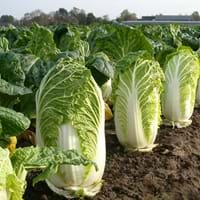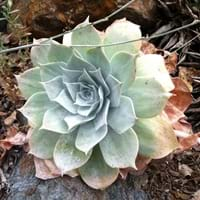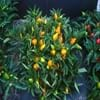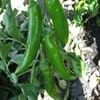Life Span
Annual or Biennial
Perennial
Origin
Europe
Western United States, Mexico
Types
Blues F1, Chinese Express, Monument
Dudleya brittonii
Dudleya pulverulenta
Dudleya farinosa
Dudleya caespitosa
Dudleya virens
Habitat
agricultural areas
Barren waste areas, Semi arid regions, Semi desert
USDA Hardiness Zone
Not Available
Not Available
Sunset Zone
A1, A2, A3, H1, H2, 1a, 1b, 2a, 2b, 3a, 3b, 4, 5, 6, 7, 8, 9, 10, 11, 12, 13, 14, 15, 16, 17, 18, 19, 20, 21, 22, 23, 24
Not Available
Habit
Clump-Forming
Rosette/Stemless
Flower Color
Yellow
White, Yellow, Red, Pink
Flower Color Modifier
Bicolor
Not Available
Fruit Color
Not Available
Non Fruiting Plant
Leaf Color in Spring
Light Green
Green, Gray
Leaf Color in Summer
Not Available
Green, Gray
Leaf Color in Fall
Not Available
Green, Gray
Leaf Color in Winter
Not Available
Green, Gray
Leaf Shape
Cushion
Acuminate
Plant Season
Spring, Summer, Fall, Winter
Spring, Summer, Fall, Winter
Sunlight
Full Sun, Partial Sun
Full Sun
Type of Soil
Loam, Sand
Sand
The pH of Soil
Neutral
Neutral
Soil Drainage
Well drained
Well drained
Bloom Time
Spring, Summer, Late Winter
Summer
Tolerances
Drought
Drought
Where to Plant?
Ground
Ground
How to Plant?
Seedlings, Transplanting
Cuttings, Stem Cutting
Plant Maintenance
Medium
Medium
Watering Requirements
Prefer drip-irrigation instead of Over-head watering
Allow soil to be completely dry in between waterings, Needs less watering
In Summer
Ample Water
Lots of watering
In Spring
Moderate
Moderate
In Winter
Average Water
Average Water
Soil Type
Loam, Sand
Sand
Soil Drainage Capacity
Well drained
Well drained
Sun Exposure
Full Sun, Partial Sun
Full Sun
Pruning
No pruning needed
Remove damaged leaves, Remove dead branches, Remove dead leaves, Remove dead or diseased plant parts
Fertilizers
20-20-20 amount, Compost
No fertilizers needed
Pests and Diseases
Aphids, Beetles, Black rot, Blackleg, Cabbage looper, Cabbageworm, Clubroot, Flea Beetles, Nematodes, Purple Blotch, Slugs, Snails
Cochineal insect, Mealybugs, Nematodes, Red blotch, Rodent, Scale insects
Plant Tolerance
Drought
Drought, Dry Conditions, Dry soil, Full Sun, Shade areas
Flower Petal Number
Single
Single
Fragrant Bark/Stem
Yes
No
Foliage Texture
Coarse
Bold
Foliage Sheen
Not Available
Matte
Attracts
Bugs
Hummingbirds, Butterflies
Allergy
Not Available
Not Available
Aesthetic Uses
Not Used For Aesthetic Purpose
Not Used For Aesthetic Purpose
Beauty Benefits
For treating wrinkles, Good for skin, Remove blemishes, Treatment of Dark Spots
Not Available
Edible Uses
Yes
Not Available
Environmental Uses
soil stabilisation
Air purification
Medicinal Uses
Folate, Low calories, Vitamin A, Vitamin C, Vitamin K
Not Available
Part of Plant Used
Whole plant
Leaves
Other Uses
Used As Food, Used for its medicinal properties
Not Available
Used As Indoor Plant
No
No
Used As Outdoor Plant
Yes
Yes
Garden Design
Container, Edible, Herb / Vegetable
Container, Houseplant, Mixed Border, Rock Garden, Wall
Botanical Name
BRASSICA rapa 'Little Jade'
DUDLEYA
Common Name
Little Jade Napa Cabbage, Napa Cabbage
Chalk Lettuce
Chalk dudleya
In Hindi
नापा पत्तागोभी
Dudleya
In German
Chinakohl
Dudleya
In French
Napa chou
Dudleya
In Spanish
Lechuga de Napa
dudleya
In Greek
Νάπα Λάχανο
Dudleya
In Portuguese
Repolho Napa
Dudleya
In Polish
Kapusta Napa
Dudleya
In Latin
Napa Brassica
Dudley
Phylum
Magnoliophyta
Tracheophyta
Class
Magnoliopsida
Magnoliopsida
Order
Capparales
Saxifragales
Family
Brassicaceae
Crassulaceae
Clade
Not Available
Angiosperms, Core eudicots, Eudicots
Tribe
Not Available
Not Available
Subfamily
Not Available
Not Available
Number of Species
Not Available
Importance of Napa Cabbage and Dudleya
Want to have the most appropriate plant for your garden? You might want to know the importance of Napa Cabbage and Dudleya. Basically, these two plants vary in many aspects. Compare Napa Cabbage and Dudleya as they differ in many characteristics such as their life, care, benefits, facts, etc. Every gardener must at least have the slightest clue about the plants he wants to plant in his garden. Compare their benefits, which differ in many ways like facts and uses. The medicinal use of Napa Cabbage is Folate, Low calories, Vitamin A, Vitamin C and Vitamin K whereas of Dudleya is Not Available. Napa Cabbage has beauty benefits as follows: For treating wrinkles, Good for skin, Remove blemishes and Treatment of Dark Spots while Dudleya has beauty benefits as follows: For treating wrinkles, Good for skin, Remove blemishes and Treatment of Dark Spots.
Compare Facts of Napa Cabbage vs Dudleya
How to choose the best garden plant for your garden depending upon its facts? Here garden plant comparison will help you to solve this query. Compare the facts of Napa Cabbage vs Dudleya and know which one to choose. As garden plants have benefits and other uses, allergy is also a major drawback of plants for some people. Allergic reactions of Napa Cabbage are Not Available whereas of Dudleya have Not Available respectively. Having a fruit bearing plant in your garden can be a plus point of your garden. Napa Cabbage has no showy fruits and Dudleya has no showy fruits. Also Napa Cabbage is not flowering and Dudleya is not flowering . You can compare Napa Cabbage and Dudleya facts and facts of other plants too.





